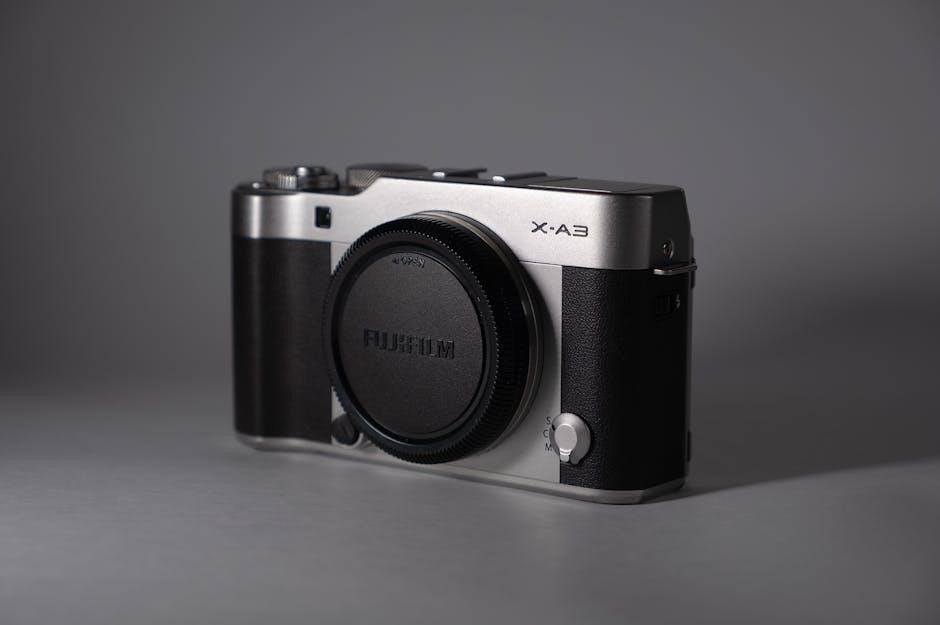
The GE Profile Washing Machine offers advanced features, energy efficiency, and reliable performance, making it a top choice for modern laundry needs․ This manual provides essential guidance for optimal use and maintenance․
1․1 Overview of the GE Profile Series
The GE Profile Series represents a line of high-performance washing machines designed to deliver efficient and reliable laundry solutions․ Known for their advanced features and sleek designs, these appliances are tailored to meet modern household needs․ The series includes models like the GE Profile PTW600BPRDG, PTW700BSTWS, and PTW700BPTDG, each offering unique capabilities such as large capacities, smart technology integration, and energy-saving modes․ These machines are built with durable materials, including stainless steel baskets, ensuring long-lasting performance․ The GE Profile Series is also recognized for its user-friendly interfaces and customizable wash cycles, making it a preferred choice for homeowners seeking convenience and superior cleaning results․ This overview highlights the key attributes that make the GE Profile Series a standout in the market․
1․2 Key Features of the GE Profile Washing Machine
The GE Profile Washing Machine is equipped with innovative features designed to enhance laundry efficiency and user convenience․ It boasts a spacious interior with capacities ranging up to 5․4 cubic feet, accommodating bulky items and large loads effortlessly․ Energy efficiency is a hallmark, with models featuring Eco Mode to reduce water and energy consumption․ Smart technology integration allows for seamless connectivity to smartphones, enabling remote monitoring and control․ Additionally, the machine operates quietly, thanks to its advanced silent operation design․ Certain models, such as the PTW700BSTWS and PTW700BPTDG, include specialized cycles like sanitize and steam cleaning for deeper hygiene․ These features collectively ensure a superior laundry experience, blending performance, sustainability, and modern convenience․
1․3 Importance of the User Manual
The user manual is an essential resource for understanding and utilizing the GE Profile Washing Machine effectively․ It provides detailed instructions on installation, operation, and maintenance, ensuring optimal performance and longevity․ The manual includes safety guidelines, troubleshooting tips, and explanations of advanced features like Eco Mode and Smart Technology․ By following the manual, users can avoid common errors, maintain efficiency, and resolve issues independently․ It also serves as a reference for warranty information and customer support contacts․ Regularly reviewing the manual helps users stay informed about best practices, ensuring their appliance operates safely and efficiently․ This guide is indispensable for both new and experienced users, offering comprehensive insights to maximize the machine’s capabilities and extend its lifespan․

Installation and Setup
Proper installation ensures safe and efficient operation․ Follow the manual’s instructions for electrical and plumbing connections, and ensure the machine is level and securely positioned to avoid damage․
2․1 Pre-Installation Requirements
Before installing your GE Profile washing machine, ensure the installation area meets specific requirements․ Choose a level, stable surface to prevent vibration and imbalance during operation․ Ensure proper ventilation to avoid moisture buildup․ Check that electrical and water supply connections are compatible with the machine’s specifications․ The area should be clear of flammable materials and provide easy access for maintenance․ Ensure the drain system is properly installed and capable of handling the washer’s discharge․ Refer to the manual for detailed specifications and guidelines to ensure a safe and successful installation process․
2․2 Step-by-Step Installation Guide
Follow the installation manual carefully to ensure proper setup of your GE Profile washing machine․ Begin by positioning the washer on a level, stable surface to prevent vibration․ Next, connect the water supply lines to the machine, ensuring they are securely attached to avoid leaks․ Plug the power cord into a grounded electrical outlet, adhering to the voltage requirements specified in the manual․ Install the drain hose correctly, ensuring it is not kinked or blocked․ After connecting all components, run a test cycle to check for leaks or improper installation․ Refer to the manual for detailed diagrams and specific instructions tailored to your model․ Proper installation ensures safe and efficient operation of the washer․
2․3 Electrical and Plumbing Connections
Ensure the GE Profile washing machine is connected to a dedicated 120V, 60Hz electrical circuit to prevent power issues․ Use a grounded outlet and avoid extension cords for safety․ For plumbing, connect the water supply lines to the machine’s inlet valves, using stainless steel or reinforced hoses to prevent leaks․ The water pressure should be between 20 and 120 PSI․ Install the drain hose securely, ensuring it does not exceed 8 feet in height to avoid siphoning․ Check all connections for leaks before operating the washer․ Refer to the manual for specific fitting sizes and configurations․ Proper electrical and plumbing connections are crucial for safe and efficient operation of the appliance․

Operating the Washing Machine
Understand the control panel functions, select appropriate wash cycles, and load laundry following guidelines․ Start the machine, ensuring balanced loads and correct detergent use for optimal performance․
3․1 Understanding the Control Panel
The GE Profile washing machine features an intuitive control panel designed for easy navigation․ It includes options for selecting wash cycles, adjusting temperature settings, and enabling advanced features like steam cleaning or sanitize modes․ The panel also displays diagnostic messages and cycle progress․ Familiarizing yourself with each button and its function ensures efficient operation․ For detailed explanations, refer to the manual, which outlines each control’s purpose and operation․ Proper use of the control panel enhances cleaning performance and extends the machine’s longevity․ Always ensure the panel is clean and free from debris to maintain responsiveness and functionality․
3․2 Selecting the Right Wash Cycle
Selecting the appropriate wash cycle on your GE Profile washing machine ensures optimal cleaning and fabric care․ The machine offers various cycles, including delicate, normal, heavy-duty, and sanitize options․ For lightly soiled items, a gentle cycle is ideal, while heavily soiled or bulky items require a more robust setting․ The sanitize cycle uses high heat to eliminate bacteria, perfect for bedding or towels․ Always match the cycle to the fabric type and soil level for best results․ Refer to your user manual for detailed descriptions of each cycle and their recommended uses․ Proper cycle selection enhances cleaning efficiency and protects your garments from damage․
3․3 Loading Laundry: Best Practices
Properly loading your GE Profile washing machine ensures efficient cleaning and prevents damage to both the machine and your clothes․ Avoid overloading the drum, as this can reduce cleaning performance and cause mechanical strain․ Separate delicate fabrics from heavier items and use mesh laundry bags for fragile garments․ Distribute clothes evenly to maintain balance during cycles․ Leave enough space for water to flow freely, ensuring all items are washed thoroughly․ For bulky items like blankets, use the designated heavy-duty cycle․ Never overload the machine beyond its capacity, as indicated in the manual․ This ensures optimal performance and extends the lifespan of your washer․

Maintenance and Care
Regular maintenance ensures optimal performance․ Clean the washer filter, check drain hoses, and leave the lid open to dry․ Follow manual guidelines for longevity and efficiency․
4․1 Cleaning the Washer Filter
Cleaning the washer filter is essential for maintaining your GE Profile Washing Machine’s efficiency․ Locate the filter at the bottom right corner․ Open the access door using a flat tool․ Unscrew the housing slowly to avoid water spillage․ Remove and rinse the filter under running water to eliminate debris․ Regular cleaning prevents lint buildup and ensures smooth operation․ After cleaning, reinstall the filter securely and close the door․ This simple process helps maintain performance and prevents potential issues․ Always refer to the manual for specific instructions tailored to your model․
4․2 Routine Maintenance Tips
Routine maintenance is key to ensuring your GE Profile Washing Machine operates efficiently and lasts longer․ Regularly check and clean the washer filter to prevent lint and debris buildup․ Inspect the drainage system for blockages and ensure proper water flow․ Run a cleaning cycle with a washer cleaner or vinegar solution to remove detergent residue and odors․ Always leave the lid open after use to allow the interior to dry, preventing mildew․ Check the gasket and seals for wear or mold and clean them periodically․ For specific maintenance recommendations, refer to your model’s manual․ These simple practices help maintain optimal performance and prevent common issues․
4․3 Troubleshooting Common Issues
Identify and resolve common issues with your GE Profile Washing Machine by checking error codes in the manual․ If the machine vibrates excessively, ensure it’s level and balanced․ For unusual noises, inspect for loose items or debris in the drum․ If the washer won’t start, verify power supply and check the lid switch․ Low water pressure or kinked hoses can cause fill issues․ Regularly clean the filter to prevent clogs․ If problems persist, reset the machine by unplugging it for 30 seconds․ Refer to the troubleshooting section in your manual for model-specific solutions․ Addressing these issues promptly ensures optimal performance and extends the machine’s lifespan․

Advanced Features
The GE Profile Washing Machine features Eco Mode for energy efficiency, Smart Technology for app-controlled cycles, and Silent Operation for quiet performance, enhancing convenience and functionality․
5․1 Eco Mode and Energy Efficiency
The GE Profile Washing Machine features an Eco Mode designed to optimize energy and water usage․ This mode adjusts water temperature and cycle length to deliver efficient cleaning while reducing utility bills․ With ENERGY STAR certification, the machine meets strict energy efficiency standards, ensuring eco-friendly performance․ Eco Mode is ideal for everyday loads, providing a balance between cleaning power and resource conservation․ By utilizing advanced sensors and smart technology, the washer minimizes energy consumption without compromising wash quality․ This feature not only helps protect the environment but also lowers operational costs, making it a practical choice for eco-conscious households․ The Eco Mode is seamlessly integrated into the control panel, allowing users to easily activate it for greener laundry routines․
5․2 Smart Technology Integration
The GE Profile Washing Machine integrates advanced smart technology for enhanced convenience and control․ With Wi-Fi connectivity, users can manage laundry tasks remotely using the GE Appliances app․ This feature allows you to start, stop, or monitor cycles from your smartphone․ Voice control through Amazon Alexa or Google Assistant enables hands-free operation, making it easier to handle laundry․ The machine also supports SmartDispense, which automatically dispenses the right amount of detergent․ Additionally, Smart Wash Technology detects load size and soil level to optimize cleaning․ These innovations ensure efficient, personalized, and connected laundry care, aligning with modern smart home lifestyles․ The app also provides maintenance alerts and energy usage reports for optimal performance․
5․3 Silent Operation Features
The GE Profile Washing Machine is designed with silent operation features to minimize noise during cycles․ Equipped with advanced noise reduction technology, it ensures quiet performance, making it ideal for homes where laundry areas are near living spaces․ The machine features a quiet motor and a balanced drum design to reduce vibrations and operational noise․ Additionally, smart sensors optimize wash cycles, further enhancing silent operation․ For extra quietness, a dedicated silent cycle can be selected for delicate fabrics or late-night use․ These features ensure a peaceful laundry experience while maintaining high performance and efficiency, making the GE Profile Washing Machine a suitable choice for noise-sensitive environments․

Safety Guidelines
Always read the manual before use․ Keep children away while operating․ Avoid overloading the machine․ Follow proper installation and maintenance guidelines․ Ensure emergency shutdown procedures are understood for safe operation․
6․1 General Safety Precautions
Always read the user manual thoroughly before operating the GE Profile Washing Machine․ Ensure children are supervised and kept away from the machine while it is in use․ Avoid overloading the washer, as this can cause imbalance and damage․ Never leave the machine unattended during operation․ Follow all installation instructions carefully to prevent accidents․ Keep the area around the washer clear of clutter to avoid tripping hazards․ Regularly inspect and maintain the machine to ensure proper function․ Be aware of hot surfaces and sharp edges․ In case of an emergency, know how to disconnect power and water supply immediately․ Adhere to all safety guidelines to protect yourself and others from potential harm․
6․2 Child Safety Features
The GE Profile Washing Machine includes several child safety features to ensure safe operation․ A child safety lock prevents accidental start or changes to settings during a cycle․ This feature can be activated easily through the control panel․ Additionally, the machine is designed with secure lids and doors to prevent children from accessing the interior during operation․ Parents are advised to keep children away from the washer and ensure they do not play with the controls․ Regularly check that all safety features are enabled and functioning properly․ These measures help protect children from potential hazards and ensure a safer laundry environment for the entire family․
6․3 Emergency Procedures
In case of an emergency, such as a power outage or machine malfunction, follow these steps to ensure safety․ First, turn off the power supply to the washing machine at the circuit breaker․ If water is leaking, shut off the water supply valves immediately․ For excessive vibration, check if the machine is properly balanced and restart the cycle․ If the washer does not drain, ensure the drain pump filter is clean․ For any electrical issues, unplug the machine and avoid using it until it is repaired․ Always consult the user manual for specific guidance or contact GE customer support for professional assistance․ Regular maintenance can help prevent emergencies and ensure safe operation․

Technical Specifications
GE Profile washers feature capacities from 3․5 to 5․3 cu․ ft․, with energy-efficient designs․ Models like PTW600BPRDG and PTW700BSTWS offer advanced tech and compatible with HE detergents․
Energy consumption varies by model, ensuring optimal performance while saving resources․
Dimensions and weight are provided for proper installation planning․
7․1 Capacity and Dimensions
The GE Profile washing machines offer varying capacities to suit different laundry needs․ Models like the PTW600BPRDG feature a 3․5 cu․ ft․ capacity, while the PTW700BSTWS and PTW700BPTDG boast a larger 5․3 cu․ ft․ capacity, ideal for bulkier loads․
Dimensions are designed for standard laundry spaces, typically measuring 27 inches in width, 38-39 inches in height, and 34-35 inches in depth, ensuring a compact yet efficient fit․
These measurements may vary slightly by model, so always refer to your specific unit’s manual for precise dimensions․
Understanding these specs helps ensure proper installation and compatibility with your laundry area;
7․2 Energy Consumption Details
GE Profile washing machines are designed with energy efficiency in mind, offering low power consumption while delivering superior cleaning performance․
Models like the PTW700BSTWS and PTW700BPTDG feature a 5․3 cu․ ft․ capacity and are Energy Star certified, ensuring reduced energy and water usage․
These machines typically operate on 120V and 60Hz, with estimated annual energy consumption ranging between 100-200 kWh, depending on usage patterns․
Advanced features like Eco Mode and smart sensors optimize energy use by adjusting water and spin cycles based on load size․
Refer to your specific model’s manual for exact energy consumption details and tips to minimize energy usage․
7․3 Compatible Detergents and Additives
GE Profile washing machines are compatible with high-efficiency (HE) detergents, which are specifically designed to produce fewer suds and optimize cleaning performance․
Using HE detergents helps prevent excessive foam and ensures proper drainage, maintaining the machine’s efficiency and longevity․
For best results, avoid using regular detergents or excessive amounts, as this can lead to poor wash quality and potential machine damage․
Fabric softeners and bleach can be used but should be added according to the manufacturer’s guidelines to avoid damaging clothes or the washer․
Always check the detergent’s compatibility with the wash cycles and load sizes for optimal performance․

Warranty and Support
GE Profile washing machines come with a comprehensive warranty program, offering coverage for parts and labor․ For detailed warranty information and customer support options, visit the GE Appliances website or contact their support team directly․
8․1 Understanding Your Warranty
Understanding your GE Profile washing machine warranty is crucial for ensuring coverage and protection․ The warranty typically covers parts and labor for a specified period, addressing manufacturing defects․ It’s essential to review the terms to know what’s included and excluded․ For instance, routine maintenance issues or damage caused by improper installation may not be covered․ Keep your purchase receipt and warranty documentation safe for reference․ Additionally, GE offers extended warranty options for added protection․ Always refer to the official GE Appliances website or the provided manual for detailed warranty conditions and duration․ This ensures you can utilize the warranty effectively if repairs or replacements are needed․
8․2 Contacting Customer Support
For assistance with your GE Profile washing machine, contact customer support through various channels․ Visit the official GE Appliances website and navigate to the “Owners Support” section, where you can find manuals, troubleshooting guides, and contact information; You can also call the GE Answer Center at 800․626․2000 for immediate help․ Additionally, online resources and live chat options are available for convenience․ Ensure you have your model number ready for quicker service․ GE customer support is committed to resolving issues promptly, whether you need repair services, warranty inquiries, or general guidance․ Utilize these resources to maintain your appliance’s performance and address any concerns effectively․
8․3 Online Resources and Manuals
GE Appliances provides comprehensive online resources for the Profile washing machine․ Visit their official website and navigate to the “Owners Support” section to access manuals, troubleshooting guides, and technical specifications․ Enter your model number to download the specific manual for your appliance․ These resources include detailed instructions for installation, operation, and maintenance․ Additionally, you can find energy guides and quick spec literature to understand your washer’s features better․ Online manuals are available in PDF format, ensuring easy access and printing․ Utilize these resources to resolve issues, learn about advanced features, and ensure optimal performance of your GE Profile washing machine․ Regular updates are provided for the latest information․

Specialized Wash Cycles
The GE Profile washing machine offers specialized cycles for delicate fabrics, heavy-duty items, and sanitize options, ensuring optimal cleaning for various laundry needs with advanced precision․
9․1 Delicate and Hand-Wash Cycles
The GE Profile washing machine features a delicate cycle designed for gentle fabric care, mimicking hand-washing․ This cycle uses low agitation and minimal water to protect sensitive materials like silk and wool․ For items labeled “hand-wash only,” the machine offers a specialized setting that ensures they receive the care they need without damage․ These cycles are perfect for maintaining the quality of your delicate garments, ensuring they remain soft and intact after each wash․ By selecting the appropriate cycle, you can trust your machine to handle even the most fragile fabrics with precision and care․
9․2 Heavy-Duty and Bulky Items
The GE Profile washing machine excels at handling heavy-duty and bulky items with its robust design and advanced cycles․ The Heavy-Duty cycle is specifically engineered to tackle tough stains and thick fabrics, ensuring a deep clean․ For bulky items like comforters or heavy-duty workwear, the machine offers a specialized bulk cycle that extends wash times and uses higher spin speeds to remove excess water․ Always ensure bulky items are balanced in the drum and avoid overloading to maintain optimal performance․ Using a laundry bag for delicate or oversized items can help prevent damage․ This feature ensures your toughest laundry loads receive the care they need without compromising on cleaning efficiency․
9․3 Sanitize and Steam Cleaning
The GE Profile washing machine features advanced sanitize and steam cleaning options to deeply clean and sanitize your laundry․ The sanitize cycle uses high-temperature water to eliminate bacteria and viruses, while the steam cleaning option penetrates fabrics to remove tough stains and odors․ These features are particularly effective for cleaning heavily soiled items, such as gym clothes or bedding․ The steam function also helps reduce wrinkles, making ironing easier․ For optimal results, ensure the washer is properly installed and follow the recommended detergent guidelines․ Regular use of these cycles ensures a hygienic and fresh laundry experience while maintaining fabric integrity․

Model-Specific Features
The GE Profile series offers distinct features across models․ The PTW600BPRDG includes a 5․0 cu․ ft․ capacity and SmartDispense technology, while the PTW700BSTWS features a 5․3 cu․ ft․ capacity with steam and sanitize options․ The PTW700BPTDG boasts advanced smart technology and silent operation capabilities for enhanced user convenience․
10․1 GE Profile PTW600BPRDG Features
The GE Profile PTW600BPRDG is a high-efficiency washing machine designed for superior cleaning performance․ It features a large 5․0 cu․ ft․ capacity, making it ideal for handling bulky loads․ Equipped with SmartDispense technology, it automatically dispenses the right amount of detergent for each cycle, optimizing wash results․ The machine also includes a durable stainless steel basket that resists rust and ensures long-lasting performance․ With its advanced sensor technology, it adapts to load size and fabric type, providing gentle care for delicate items and powerful cleaning for heavily soiled laundry․ Additionally, it offers energy-efficient operation, earning it an ENERGY STAR certification․ This model is user-friendly, with an intuitive control panel and customizable cycles to meet specific laundry needs․
10․2 GE Profile PTW700BSTWS Features
The GE Profile PTW700BSTWS is a high-capacity washing machine with a 5․3 cu․ ft․ drum, ideal for large families or bulk laundry․ It features SmartDispense technology, which holds up to 75 ounces of detergent for multiple loads․ The machine offers advanced cycles like Sanitize and Steam, ensuring deep cleaning and freshness․ Its stainless steel basket is durable and resistant to rust, while the Silent Operation feature minimizes noise․ This model is ENERGY STAR certified, promoting energy efficiency․ With customizable settings and a user-friendly interface, it provides flexibility for various fabric types and soil levels․ The PTW700BSTWS combines innovative technology with practical design, making it a versatile and efficient laundry solution․
10․3 GE Profile PTW700BPTDG Features
The GE Profile PTW700BPTDG is a cutting-edge washing machine designed for superior performance and convenience․ It boasts a spacious 5․4 cu․ ft․ capacity, making it ideal for handling bulky items and large households․ This model features advanced technologies like Smart Technology Integration, allowing users to control and monitor their laundry via a smartphone app․ The machine also includes Silent Operation for reduced noise and an ENERGY STAR certification for energy efficiency․ With multiple wash cycles, including Sanitize and Steam options, it ensures thorough cleaning and fabric care; Additionally, the PTW700BPTDG includes maintenance-friendly features like a self-cleaning basket and filter․ Its sleek design and intuitive controls make it a practical and stylish addition to any home․


































